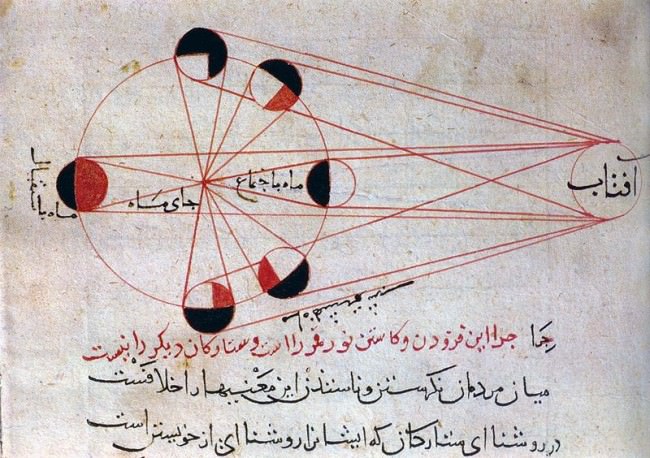By Owen Gingerich
Scientific American, Vol.254 (April 1986)
Introduction: Historians who track the development of astronomy from antiquity to the Renaissance sometimes refer to the time from the eighth through the 14th centuries as the Islamic period. During that interval most astronomical activity took place in the Middle East, North Africa and Moorish Spain. While Europe languished in the Dark Ages, the torch of ancient scholarship had passed into Muslim hands. Islamic scholars kept it alight, and from them it passed to Renaissance Europe. Two circumstances fostered the growth of astronomy in Islamic lands. One was geographic proximity to the world of ancient learning, coupled with a tolerance for scholars of other creeds. In the ninth century most of the Greek scientific texts were translated into Arabic, including Ptolemy’s Syntaxis, the apex of ancient astronomy. It was through these translations that the Greek works later became known in medieval Europe. (Indeed, the Syntaxis is still known primarily by its Arabic name, Almagest, meaning “the greatest.”)
The second impetus came from Islamic religious observances, which presented a host of problems in mathematical astronomy, mostly related to timekeeping. In solving these problems the Islamic scholars went far beyond the Greek mathematical methods. These developments, notably in the field of trigonometry, provided the essential tools for the creation of Western Renaissance astronomy. The traces of medieval Islamic astronomy are conspicuous even today. When an astronomer refers to the zenith, to azimuth or to algebra, or when he mentions the stars in the Summer Triangle–Vega, Altair, Deneb–he is using words of Arabic origin. Yet although the story of how Greek astronomy passed to the Arabsis comparatively well known, the history of its transformation by Islamic scholars and subsequent retransmission to the Latin West is only now being written. Thousands of manuscripts remain unexamined. Nevertheless, it is possible to offer at least a fragmentary sketch of the process.
